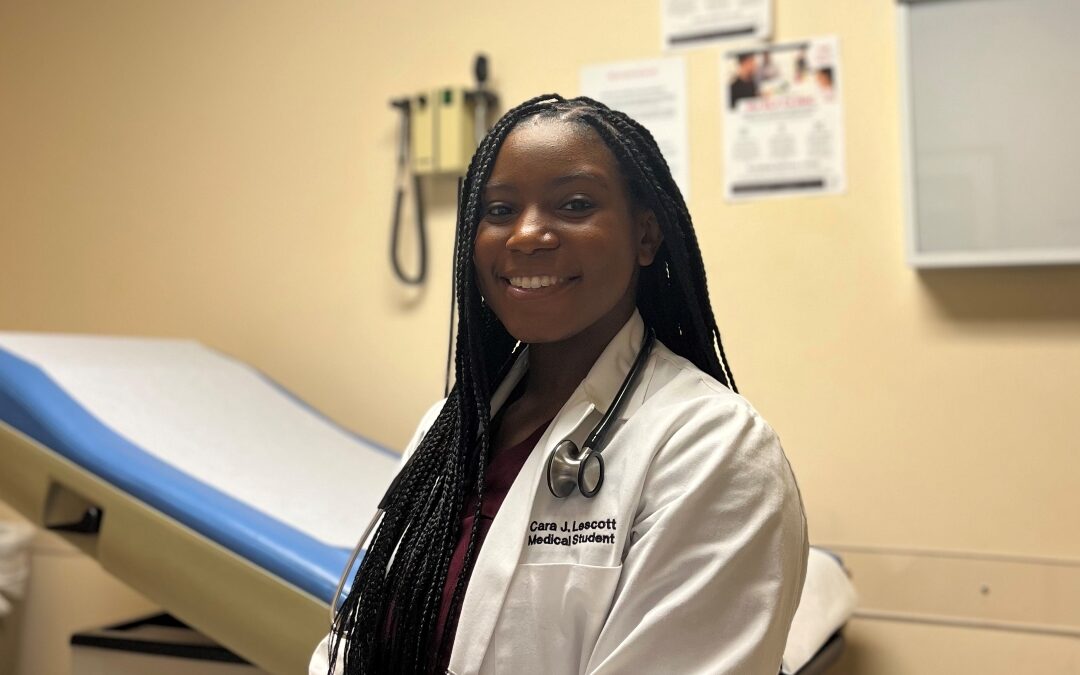On the Newark campus of Rutgers Biomedical and Health Sciences, a health clinic run by medical students has been changing lives—and no doubt saving them—for more than 50 years. The Student Family Health Care Center serves the severely underserved: city residents who might otherwise be unable to access health care.
The clinic’s mission remains steadfastly aligned with its original charge. It was created following the 1967 Newark Rebellion, one of hundreds of uprisings across the nation during that era that were rooted in simmering frustration over the persistence of oppressive racial inequalities. To help improve conditions for the people of Newark, students at New Jersey Medical School (then the New Jersey College of Medicine and Dentistry) founded the clinic.
Dynamics are different today, but racial injustices and socioeconomic factors still affect city residents’ health and well-being. And while the clinic’s commitment is unchanged, its approach to health care has expanded to reflect a greater understanding about health disparities and their root causes.
“Our medical students who staff the clinic [with faculty supervision] have to look at the social determinants of their patients’ health because, oftentimes, their medical issues require more than simply prescribing a medicine,” says physician Novneet Sahu, an assistant professor at New Jersey Medical School and a core faculty member of Rutgers Global Health Institute. Currently, Sahu is interim chair of the medical school’s family medicine department, which oversees the clinic. “These issues require that the students treating them look at the larger economic and physical environment, at education, nutrition, the community, and issues within the health care system.”
Providing patient-centered care
Located at 90 Bergen St., the clinic operates on Tuesday and Thursday evenings. Appointments also are available at the clinic’s satellite locations at three shelters in the city: Fairmont Health Services, The Apostles House, and Hope Village.
The clinic uses a multidisciplinary, collaborative approach to address patients’ needs within and beyond the medical sphere. In addition to primary care, its offerings now include case management services, thanks to a collaboration with the Rutgers School of Graduate Studies.
Sahu says that the clinic’s patient population also has shifted in recent years. The expansion of Medicaid under the 2010 Affordable Care Act allowed large numbers of Newark’s underserved residents to receive health care benefits. Now, he says, the clinic largely serves two groups of Newark residents: undocumented uninsured individuals and people who are insured but unable to visit a health care facility during the day.
“A lot of our patients are working two jobs. They can never make it to a doctor’s appointment during standard hours without losing income, so this is one of the only places for them to get care,” Sahu says.
Considering the social determinants of health
The challenge of finding adequate medical care isn’t the only common ground the clinic’s patients share. As Sahu notes, most patients suffer from social disadvantages that negatively impact their health. The medical students—future doctors—are learning to ask themselves and their patients questions about what might be driving disease, beyond the underlying biomedical reasons. If patients are suffering from hypertension, for instance, is it because they feel unsafe exercising outdoors and so have gained weight? Do they rely on fast food, heavy in salt, because they live in a food desert or need quick and cheap meals?
As is the case in Newark, however, the conditions that make good health possible are not always accessible. Health literacy and language barriers also affect patients’ health care experiences.
“Students help patients navigate our complex health system,” says clinic preceptor Noa’a Shimoni, a family physician, associate professor at the medical school, and Rutgers Global Health Institute core faculty member. She says that Rutgers graduate students, many of whom are preparing to work in health-related fields, serve as case managers or patient navigators, helping patients apply for Charity Care, make appointments with specialists, and find free or low-cost medications.
“It’s a daunting process, even for people who feel empowered and speak English, and many of our patients do neither,” says Michael Gerstmann, the clinic’s faculty advisor.
Medical education – and inspiration
The structure of the clinic is such that third- and fourth-year medical students teach and monitor first- and second-year students in real time during patient examinations. Sahu says that this creates opportunities for patients to gain a detailed understanding of their conditions, and that this context also can contribute to improvements in patients’ health literacy.
These multidimensional interactions also support the medical students’ understanding of the social determinants of health, which is relevant knowledge for any health care setting, not only in an urban clinic. Cara Lescott, a third-year medical student, says she learned that “there’s a lot more to patients—whether it’s housing or access to food or medications—than just the medical conditions they’re coming in with. Working at the clinic taught me to slow down and really listen to my patients.”
Students also reap less-tangible benefits. Lescott, who is Black, remembers treating a Black patient who’d brought in her school-age daughter, the latter extremely impressed that a young Black woman could be a doctor in training. “It was really powerful to think that I was taking care of these patients who look like me and giving them hope that they could do this, too,” Lescott says. “It made me really proud about where I’ve gotten and the work I’m doing.”
– Leslie Garisto Pfaff
Top photo: New Jersey Medical School student Cara Lescott is a director at the student-run health clinic in Newark.

